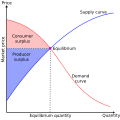| This template does not require a rating on Wikipedia's content assessment scale. It is of interest to the following WikiProjects: | |||||||||||||||
| |||||||||||||||
|
|||
|
This page has archives. Sections older than 180 days may be automatically archived by Lowercase sigmabot III when more than 4 sections are present. |
Template-protected edit request on 30 December 2024
Change | CN = 2019 to | CN = 2023.
Zoozaz1 (talk) 03:02, 30 December 2024 (UTC)
How does "r" work?
Can somebody explain to me how the "r" (rounding) parameter works? I understand the concept of significant digits, but what r does seems only vaguely related to that, and expressed in a way I find inscrutable. I've never used anything other than negative values, and usually end up doing trial-and-error until I find a value that does what I want. I tried looking at the template source code, and ran away screaming in horror. RoySmith (talk) 13:29, 4 February 2025 (UTC)
- It's not about significant digits exactly. It's about where the rounding happens, either at (r=0), after (r=2, for example), or before (r=-3) the decimal point. To get hundredths of a dollar or other currency, use r=2 (i.e. 2 digits to the right of the decimal point). To get the number rounded to the nearest thousand, use r=-3 (i.e. 3 digits to the left of the decimal point). That's what the documentation appears to say, anyway. If you have examples that don't match that explanation, please provide them here. – Jonesey95 (talk) 01:13, 6 February 2025 (UTC)
- @Jonesey95 The main issue that I can see is that the template cuts off final zeroes, even if
r=is specified, so you end up with silly things like{{Inflation|index=US-GDP|value=1|start_year=2005|r=2}}giving 1.5, not 1.50. This really does need fixing, in my opinion. Theknightwho (talk) Theknightwho (talk) 20:07, 14 February 2025 (UTC)- I agree that seems like a bug. – Jonesey95 (talk) 21:17, 14 February 2025 (UTC)
- @Jonesey95 The main issue that I can see is that the template cuts off final zeroes, even if
It is easier to understand with an example:
- {{formatnum:{{Inflation|US|2923706.026|2009|r=3}}}} —> 4,285,109.08 (3 decimal places)
- {{formatnum:{{Inflation|US|2923706.026|2009|r=2}}}} —> 4,285,109.08 (2 decimal places)
- {{formatnum:{{Inflation|US|2923706.026|2009|r=1}}}} —> 4,285,109.1 (automatic rounding removes the 0)
- {{formatnum:{{Inflation|US|2923706.026|2009|r=0}}}} —> 4,285,109 (whole number)
- {{formatnum:{{Inflation|US|2923706.026|2009|r=-1}}}} —> 4,285,110 (-1 decimal place)
- {{formatnum:{{Inflation|US|2923706.026|2009|r=-2}}}} —> 4,285,100 (-2 decimal place)
- {{formatnum:{{Inflation|US|2923706.026|2009|r=-3}}}} —> 4,285,000 (-3 decimal place)
Betty Logan (talk) 20:33, 6 February 2025 (UTC)
Edit request 8 February 2025
Description of suggested change: Per https://www.minneapolisfed.org/about-us/monetary-policy/inflation-calculator/consumer-price-index-1800-, the 2024 data can be added as 944.9 for Inflation/US/dataset. Kline • talk • contribs 19:21, 8 February 2025 (UTC)
Edit request 25 February 2025
Description of suggested change: please update the NZ year in {{Inflation/year}} and the citation year in {{Inflation/fn}} from 2021 to 2024, see update to Template:Inflation/NZ/dataset.
Diff:
| − | NZ = | + | NZ = 2024 |
Jon (talk) 03:30, 25 February 2025 (UTC)
Invalid year issue
Some weird stuff's happening on Template:ShipCost/doc and Template:AircraftCost/doc due to this template.
{{ShipCost|FRA|3600000|year=1795}} Works fine.
{{ShipCost|FRA|3600000|year=1796}} hell breaks loose. Claiming NaN and reports a misnested strong error.
{{AircraftCost|FRA|3600000|year=1795}} Works fine.
{{AircraftCost|FRA|3600000|year=1796}} Broken, claiming NaN and reports a misnested strong error.
If someone knows what's going on here and can correct the issue, would you? Thanks! Zinnober9 (talk) 23:09, 1 March 2025 (UTC)











You must be logged in to post a comment.